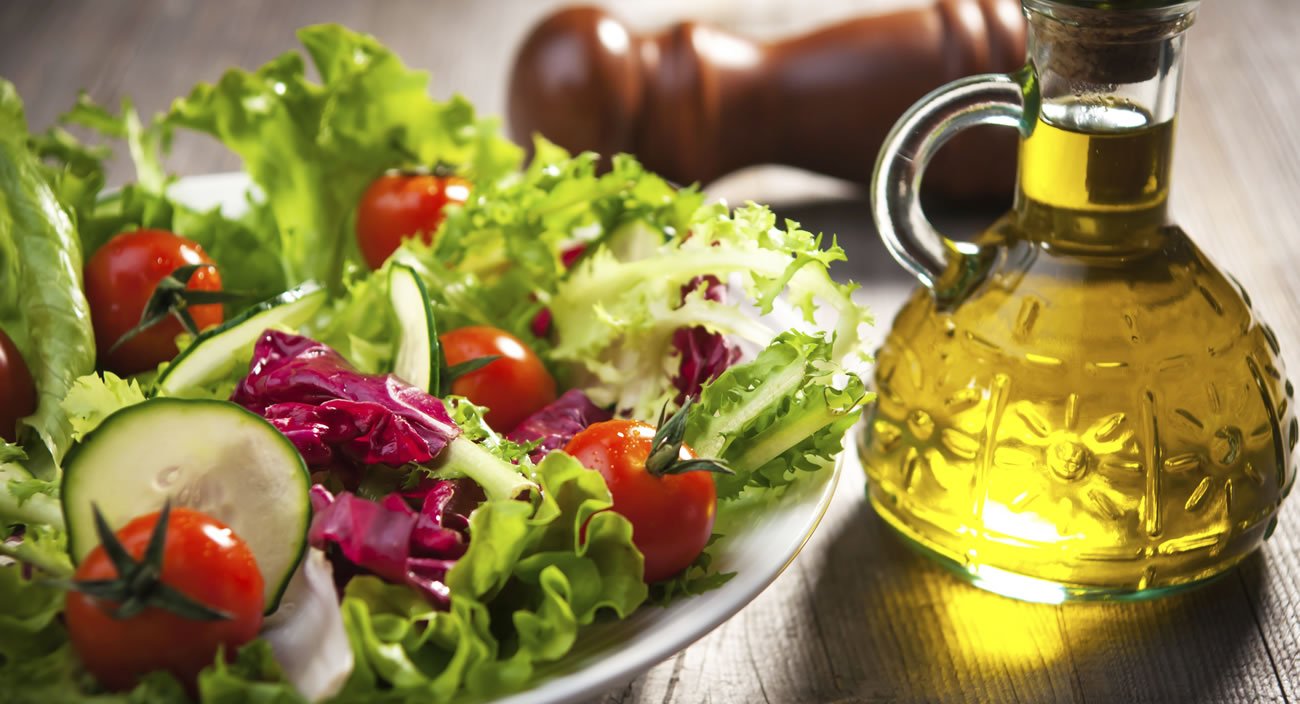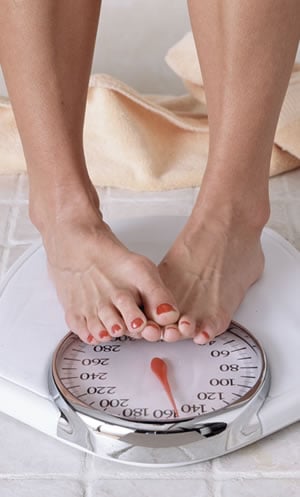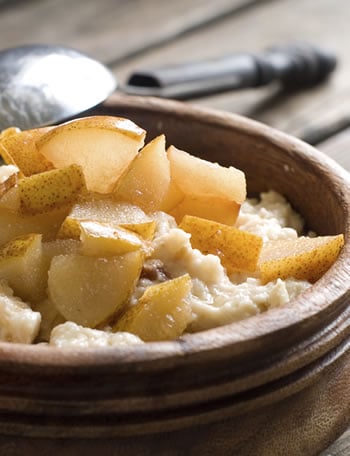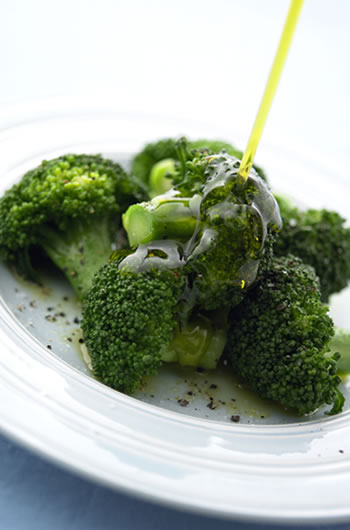The Best Foods For Weight Loss (and the Worst)
Tired of starving yourself? Feel as if you’re losing your mind while trying to lose weight? Pritikin educator and weight-loss expert Dr. Jay Kenney reports on new research that shows us how to eat well, weigh less, and stay sane.

How many calories do you eat, per bite?
That’s what the best foods for weight loss are all about. Their calorie density, which is the number of calories contained in any given weight of food, is low.
Here’s a good example. With a bowl of fettuccine Alfredo, you’re taking in about 50 calories per bite. Now, if you switch the Alfredo for a bowl of whole-wheat pasta with roasted veggies and marinara, your calorie intake is slashed to less than 25 calories per bite.
Keep in mind that research shows we tend to eat a similar weight of food despite changes in calorie density. That’s right, a bowl of pasta is a bowl of pasta. So when we’re eating ad libitum (till we’re satisfied and full), it’s easy to see which bowl of pasta would end up making us more calorie dense.
Ad libitum eating in the research world means that the people (or animals) being studied are free to eat as much as they want. There are no restrictions.
Ad libitum eating
It’s important to eat ad libitum. We shouldn’t stuff ourselves, but we do need to feel comfortably full. Otherwise, we end up crazy-hungry. But unfortunately, ad libitum eating is not what traditional weight-loss strategies have taught us for the past 100 years. Dieters have been told to focus mainly on how much they eat rather than on what they eat. They’ve been told to cut portion sizes and/or use their will power to override hunger in an attempt to create a negative calorie balance and reduce body fat stores.
Frustration, failure
But what’s been created for most people is a lot of frustration and failure, and, ultimately, more weight gain.
Typically, the calorie-restricted diet has also been accompanied by recommendations to increase calories burned by exercise. From the point of view of physics, it seems rational enough: Excessive energy stores (largely body fat) should be reduced by consciously restricting calorie intake and consciously increasing calories burned.

Studies led by Dr. Barbara Rolls at Pennsylvania State University as well as those of Drs. James Barnard and Christian Roberts at UCLA, who are following people attending the Pritikin Longevity Center, are particularly enlightening. They have documented that one of the best ways of reducing calorie intake without triggering increased hunger is to reduce the calorie density of the foods consumed. Put simply, a bowl of pasta with veggies and marinara can fill us up just as well as a bowl of pasta with cheesy Alfredo, but for less than half the calorie cost.
Best foods for weight loss
There are many ways to reduce the calorie density of a meal. Three of the most common include:
- Reducing the amount of fat (fat is far more calorie-dense than sugar, starch, or protein),
- Increasing the water content of foods (as opposed to simply drinking water with a meal), and
- Increasing the intake of foods, such as fruits and vegetables, which are naturally less calorie dense.
 Oatmeal and fruit are two of the best foods for weight loss.
Oatmeal and fruit are two of the best foods for weight loss.To study the efficacy of these three methods of cutting calorie density, Dr. Rolls and associates recently published research1 in which they recruited 62 healthy adults. (None was on a calorie-restricted diet, nor were they smokers, athletes in training, or taking drugs that could affect appetite.) They were between the ages of 20 and 45. Fifty-nine of them completed the study.
One day a week for four weeks, the Penn State scientists provided breakfast, lunch, dinner, and an evening snack. They reduced the calorie density of the entrees by 20% using one of three methods:
- Decreasing fat (using less oil or butter)
- Increasing water content (for example, turning casseroles into soups), or
- Increasing fruit and vegetable content (more fruit, for example, at breakfast, and more vegetables added to lunch and dinner entrees).
It was a crossover design, meaning that over the four-week period, and in random order, each subject got one control day (a standard meal with no calorie density reductions) plus three other days, each day featuring a different calorie-density-reduction approach.
On test days, they were fed either the control meal or the same entrées but altered so that calorie density was reduced by 20% using one of the three strategies. Entrée portion sizes were large enough so that the subjects could consume as much as they desired of the test meals. Leftovers were weighed to determine precisely how much was eaten of each of the test meals.
Feeling full on a lot fewer calories
The results were dramatic. The average reduction in ad libitum calorie intake was:
- 396 fewer calories consumed on the days when the entrees had less fat
- 308 fewer calories on the days when the entrees had more fruits and vegetables
- 230 fewer calories on the days when the entrees were cooked with extra water
Compared to the control day, the average calorie intake was reduced by 15% on the days when fat was cut, 11% on the days when fruit and veggies were added, and 9% on the days when water was added. The calorie content of the manipulated entrees accounted for two-thirds of total calorie intake on the test days.

So what does it all mean?
This study affirms, as many have before, that we can in fact cut calories and, at the same time, eat till we’re full and satisfied when we reduce the calorie density of the foods we eat. The research found that all three strategies to reduce calorie density led to a spontaneous reduction in ad libitum calorie intake, but the reductions in calorie intake were significantly greater with fat reduction.
Yes, fat, even so-called “good” fats, can pack on the pounds. As The New York Times health columnist Jane Brody recently wrote, “Americans seem to think that if a food is considered a healthier alternative [olive oil, for example, instead of lard], it’s O.K. to swallow as much of it as one might like. People forget, or never knew, that a tablespoon of olive oil or canola oil has about the same number of calories as a tablespoon of lard [about 125], and even more calories than a tablespoon of butter or margarine.”
The fact is, all oils, whether “good” or “bad,” are the most calorie-dense foods on the planet.
Dr. Rolls’ research also found that the subjects reported no differences in hunger or satiety ratings on all three days when calorie density was significantly reduced. In other words, whether eating the control meals or the lower-calorie-density meals, they were eating to their heart’s content.
Reducing calorie density, in effect, appears to be an excellent strategy for reducing calorie intake without the need to muster up a lot of will power to try to tamp down the gnawing hunger that often accompanies traditional calorie-restricted/portion-controlled diet plans.
 Take action. Choose the best foods for weight loss
Take action. Choose the best foods for weight loss
| FOOD | CALORIES PER POUND |
| Vegetables | 65 to 195 |
| Fresh Fruits | 140 to 420 |
| Potatoes, pastas, brown rice, sweet potatoes, corn, hot cereals | 320 to 630 |
| Legumes: peas and beans, such as pinto, garbanzo, black, and lentil beans (cooked) | 310 to 780 |
| Calcium-rich foods (i.e., nonfat dairy, soymilk). 2 servings daily. | 160 to 500 |
| Fish, lean poultry, lean red meat like bison | 400 to 850 |
| Dried fruit, jams, muffins, and breads, including sourdough rolls, bagels, pita breads, and baguettes | 1,200 to 1,400 |
| Dry cereals, pretzels, fat-free crackers, baked chips, popcorn | 1,480 to 1,760 |
| Regular salad dressing | 1,800 to 2,000 |
| Chocolate bars, croissants, doughnuts | 2,200 to 2,500 |
| Nuts and regular potato chips | 2,500 to 3,000 |
| Butter, margarine | 3,200 |
| Olive oil, corn oil, lard | 4,080 |
Sources
1 Williams RA, Roe LS, Rolls BJ. “Comparison of three methods to reduce energy density. Effects on daily energy intake.” Appetite, 2013; 66: 75-83.